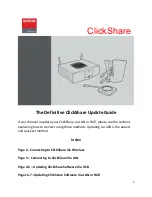
NOTE
The switching mode and the settings can be changed by executing a teach function by
means of a multifunctional input (
see "Multifunctional input (“MF Input”)", page 57
IO-Link (
see "Operation via IO-Link", page 21
NOTE
External teach via the cable and via IO-Link can be used to make the inverted teach of
the level warning threshold available, too, for the “Signal level warning” switching mode.
Surface of the object to be measured
In addition to the reflection and remission properties of the measuring object, changes
to the angle and distance can have a significant impact on the distance level measured
by the sensor. Particularly for objects with a reflective surface, a change in angle can
result in very significant changes to the signal level measurement.
Depending on the angle of the measuring object in combination with its reflective
properties, a change in distance can also have a significant impact on the measured
signal level. For example, some areas in the sensor receiver may be experience direct
reflection of the emitted light reflected by the object. The signal level varies when the
distance changes also for diffusely reflecting measuring objects. In this case, a drop in
the signal level is particularly to be observed in the direction of the measuring range
limits.
6.4.1.6.2
Teachable settings (“Teach”)
A teach-in function is accessible for the “SLWarning” switching mode.
Teach function
Description
Q
1
Signal level
warning
You can use the teach function “Q
1
SLWarning” to teach in the level warning
threshold or signal level switching point for the “SLWarning” switching mode
using the reflective properties of a reference object. In the case of a signal
level warning, a switching signal is output as soon as the taught-in signal
level is undershot. Thus the output acts as High Active (
6.4.1.6.3
Manual settings
Setting
Description
Q
1
Signal level
warning
You can use the setting “Q
1
SLWarning” to manually teach in the level warn‐
ing threshold or signal level switching point for the “SLWarning” switching
mode using a signal level within the value range of 0 to 6000.
Since the signal level is not expressed as a standardized unit, but instead
corresponds to a sensor-specific value, it is advisable to determine and
define the level warning threshold for each application based on test meas‐
urements using the signal level display shown in RUN mode.
There is no switching hysteresis function in the “SLWarning” switching mode.
This is because both the level warning threshold and time-dependent behav‐
ior of the signal level curve vary from one application to the next. In light of
these facts, it is also advisable to use external and specific or time-depend‐
ent filtering of the signal level warning in the control system in addition to
the output of the signal level warning.
Q
1
Logic
You can use the “Q
1
Logic” settingto manually select whether the output of
the signal level warning is to act as High Active (
Low Active (
6
OPERATION
46
O P E R A T I N G I N S T R U C T I O N S | DT50-2 Pro
8017154/1AVV/2021-03-24 | SICK
Subject to change without notice
















































